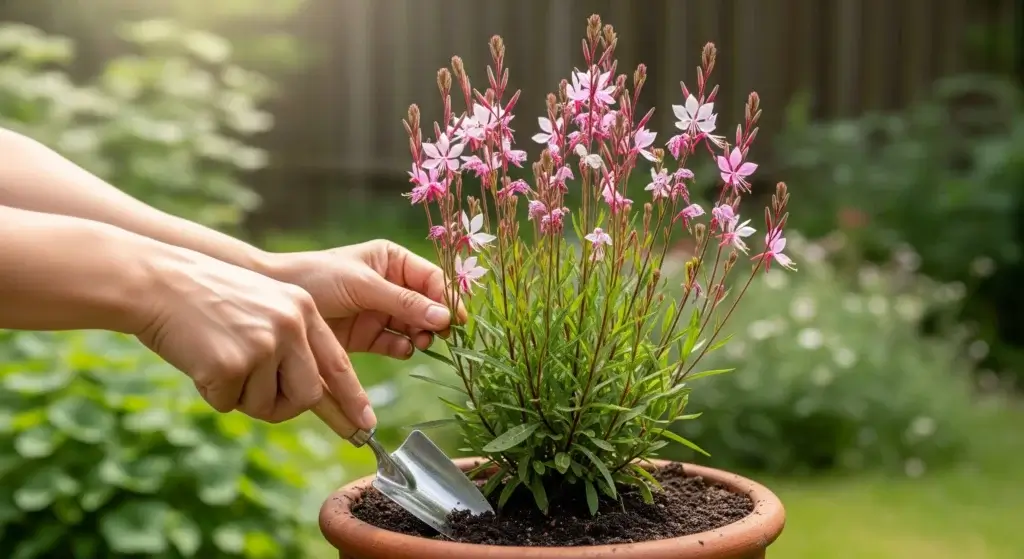Got a new bromeliad and freaking out about light? Good — that question isn’t a dumb one. It’s not a straight yes/no: bromeliads want some sun but not a roast-yourself-in-the-window kind of sun. Think bright, filtered light — like the vibe under a leafy tree, not the middle of a desert.
Bromeliads are show-offs: wild colors, weird shapes, and surprisingly chill to care for. They’re low-maintenance but picky about light — too little and they sulk, too much and their leaves get sunburned. Gardeners who stick them behind a sheer curtain usually win; windowsills facing east or west are often perfect.

Understanding Bromeliads: A Brief Overview
Before we get into the whole light drama, let’s talk about what bromeliads actually are. These plants come from the Bromeliaceae family — over 3,000 species of tropical show-offs, including the pineapple (yes, the fruit you eat is basically their celebrity cousin).
In the wild, most bromeliads don’t even grow in soil. They’re epiphytes, meaning they chill on trees, not steal from them — kind of like freeloaders who bring their own snacks. They soak up water, dust, and nutrients from rain and air instead. Because they live high up in the rainforest canopy, they’re used to soft, filtered light — like sunlight that’s been through nature’s Instagram filter.
Do Bromeliads Actually Need Direct Sun?
Here’s the deal — most bromeliads don’t want direct sun. They’re not desert plants, and too much sunlight can fry them faster than a forgotten phone left on a dashboard. What they really crave is bright, indirect light — the kind that makes them glow without burning their fancy leaves. That’s how you get those wild colors and stunning blooms.
- Read Also: Garden Lighting: Easy and Affordable DIY Garden Lighting Ideas
- Read Also: DIY Solar Light Garden Markers: Illuminate Your Plants
The Goldilocks Principle of Bromeliad Lighting
Bromeliads are basically the Goldilocks of the plant world — their light has to be just right.
Too Much Light:
If you stick your bromeliad in harsh, direct sun, its leaves can scorch and fade. Imagine getting a sunburn so bad your skin literally bleaches — yeah, that’s your plant right now. Softer types like Guzmanias and Neoregelias are especially dramatic about it.
Too Little Light:
Put them in a dark corner, and they’ll start reaching like kids trying to grab the last cookie on the shelf. Their colors fade, blooms vanish, and they look tired and sad — technically alive, but barely vibing.
Just Right:
Bright, filtered light is the sweet spot. It’s the rainforest version of “good lighting for selfies” — soft, warm, and flattering. That’s where bromeliads thrive, showing off their best colors and putting on their signature tropical show.
Different Types of Bromeliads and Their Specific Light Needs
Not all bromeliads vibe the same way with light — some are total sun-lovers, others are drama queens that wilt if you even mention direct sunlight. Knowing your specific type is key if you don’t want your plant throwing a tantrum.
High-Light Bromeliads
These are the tough ones — the desert athletes of the bromeliad world.
- Dyckias and Hechtias: Think of these as the cacti cousins. They’re used to dry, sunny spots and can handle way more direct light than the tropical types.
- Aechmeas: These ones love bright light and can deal with a little direct morning sun. It’s their version of a warm cup of coffee — energizing but not scorching.
- Neoregelias: Usually chill with bright, indirect light, but they can flex and handle a bit of soft morning sun. Just not the brutal afternoon rays — nobody likes that.
Medium-Light Bromeliads
Most of the bromeliads people keep indoors fall here — they’re balanced, not too fussy.
- Guzmanias: The poster kids of indoor bromeliads. They thrive in bright, indirect light, basically the plant equivalent of “good mood lighting.”
- Vrieseas: These look like they’re wielding tiny swords, and they like their light the same way — strong, but indirect.
- Billbergias: Fast growers that don’t make a big deal out of things. Give them medium to bright indirect light and they’ll reward you with cool colors and blooms.
Low-Light Tolerant Bromeliads
These are the chill, shade-hugging types.
- Cryptanthus (Earth Stars): Ground dwellers that can handle low light, but the more light they get, the flashier their colors become. Basically, sunlight is their filter.
- Certain Tillandsia species: Air plants are usually sun-seekers, but a few can adapt to shadier corners.
Ideal Light Conditions for Indoor Bromeliads
Getting indoor light right for bromeliads is kind of like finding the perfect selfie angle — it’s all about intensity and direction. Too much light, and they fry; too little, and they sulk.
Window Direction Matters
- East-Facing Windows: These are the MVPs. Gentle morning sun, then bright indirect light all day — bromeliads absolutely eat that up.
- West-Facing Windows: Decent, but beware the fiery afternoon sun. A sheer curtain helps filter that glare, so your bromeliad doesn’t end up looking crispy.
- South-Facing Windows: In the Northern Hemisphere, this is the tanning bed of windows. Tons of light — maybe too much.
- North-Facing Windows: Usually too dim unless your room is already super bright. You might need to tag in a grow light here — basically, the plant version of a ring light.
Measuring Light Intensity
If you want to go full plant nerd (and I say that lovingly), grab a light meter or download a phone app. You’ll be measuring in foot-candles — yeah, that’s a real unit, not a scented candle brand.
- High light: 3,000–5,000 foot-candles — for sun-hardy types.
- Medium light: 1,500–3,000 foot-candles — perfect for most bromeliads.
- Low light: 500–1,500 foot-candles — fine for shade-loving species.
Most common indoor bromeliads are happiest chilling in that 1,500–3,000 range — bright, indirect light near a window. Think “sunny but not sizzling,” like the spot you’d pick to scroll your phone without squinting.
Using Artificial Light for Bromeliads
Not everyone lives in a sunny jungle — some of us have rooms that feel like caves. Luckily, bromeliads don’t mind a little tech help. Artificial light can totally keep them glowing, blooming, and thriving, as long as you set it up right.
Types of Grow Lights
- LED Grow Lights: These are the superheroes of plant lighting — bright, cool, energy-efficient, and they last forever. Go for full-spectrum LEDs.
- Fluorescent Lights: Old-school but still solid. Mixing cool and warm fluorescent tubes gives your bromeliad the full light range it needs..
- Light Duration: Bromeliads like long “days” — around 12–16 hours of light daily since artificial light isn’t as intense as real sun.
Signs Your Bromeliad Isn’t Getting the Right Amount of Light
Your bromeliad will tell you when it’s unhappy — you just have to learn to read its mood swings.
Too Much Light Indicators:
- Leaves look bleached or faded — like your plant spent spring break in the desert.
- Brown, crispy patches or scorched spots.
- Leaves start curling up like they’re stressed out.
- The soil dries out super fast.
- Overall pale, washed-out vibe — the botanical version of burnout.
Too Little Light Indicators:
- Leaves lose their pop — colors go from “tropical explosion” to “meh.”
- It starts stretching out and looking lanky.
- No blooms or flower spikes — the plant equivalent of giving up.
- Leaves turn an even darker green, like it’s sulking in the shadows.
- It leans dramatically toward the nearest window, basically yelling, “Help, I need light!”
Seasonal Light Considerations
Light isn’t the same all year — and your bromeliad totally notices. In summer, the sun turns into a fiery overachiever, blasting through windows, so you might need to scoot your plant back or throw up a sheer curtain to chill things out. Come winter, it’s the opposite — shorter days, weaker light — so move your bromeliad closer to the window or give it a little artificial sun boost.
Fun fact: research in the Journal of Environmental Horticulture found that bromeliads actually react to seasonal light shifts. Many kind of “power down” in winter, entering a semi-dormant mode when sunlight gets scarce — basically their version of hibernation, minus the pajamas.
Acclimating Bromeliads to New Light Conditions
If you’re moving your bromeliad to a new spot or just brought it home, don’t throw it straight into a light bomb. These plants need time to adjust — they’re dramatic like that.
- Step 1: Start slow — give your plant a few hours in the new light each day.
- Step 2: Add more time over a week or so (7–10 days works great).
- Step 3: Watch for stress signs — burned leaves or fading color mean “too much, too soon.”
- Step 4: Once it’s comfy, keep the light consistent. Bromeliads love stability more than caffeine addicts love their morning coffee.
Additional Factors That Interact with Light Requirements
Light doesn’t work solo — it’s part of the whole plant-care squad: water, temperature, and humidity all join the party.
Watering and Light
More light = more water use. Bromeliads under bright light will dry out faster and need more frequent watering. Those in dimmer corners? Chill on the watering or risk root rot. Always keep fresh water in the central “tank” (that little cup in the middle) and swap it out weekly — nobody likes funky, stagnant water.
Temperature and Light
High light can heat up leaves fast. Keep the room between 60–80°F (15–27°C) — that’s their comfort zone. The American Bromeliad Society even warns that too much heat + too much light = fried plant. So yeah, ventilation is your friend.
Humidity and Light
Bright light dries the air quicker, so humidity matters. Aim for 40–60%. A humidifier, pebble tray, or even a quick misting can keep your bromeliad happy. Think “tropical spa day,” not “desert survival challenge.”
- Read Also: Optimal Growth: Decoding Snake Plant Light Requirements
- Read Also: Organic Eggplant Care: Growing Healthy, Chemical-Free Eggplants
Conclusion: Finding the Perfect Light Balance for Your Bromeliads
So, do bromeliads need sun? Kinda — but not the harsh “roast-your-skin” kind. They love bright, indirect light that mimics the rainforest vibe: sunny but shaded. The trick is paying attention — each variety has its own comfort zone, and your plant will tell you when it’s happy or not.
Here’s the cheat sheet: most bromeliads thrive in bright, filtered light (around 1,500–3,000 foot-candles). Too much sun? You’ll see scorched or faded leaves. Too little? No blooms and sad colors. East-facing windows are usually the sweet spot, and if your home’s dim, grow lights totally count as a sun substitute.



